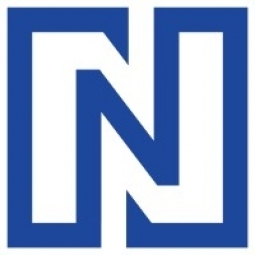公司规模
Mid-size Company
地区
- America
国家
- United States
产品
- Nvendor
- Ncontracts Manager
- Ncyber
- Nfindings
- Ncomply
技术栈
- Vendor Management System
- Contract Management Application
- Cybersecurity Assessment Application
- Findings Process Automation
- Compliance Management Software
实施规模
- Enterprise-wide Deployment
影响指标
- Cost Savings
- Productivity Improvements
- Customer Satisfaction
技术
- 应用基础设施与中间件 - 数据交换与集成
- 网络安全和隐私 - 云安全
适用行业
- 金融与保险
适用功能
- 采购
服务
- 系统集成
- 培训
关于客户
本案例研究中的客户是一家资产达 6 亿美元的信用合作社。该信用合作社的供应商管理流程面临挑战。没有集中式供应商管理系统,导致合同丢失和供应商风险评估被忽视。经理们被合同压得喘不过气来,不得不花费大量时间来解读合同。信用合作社还在昂贵的自动续约上浪费金钱。内部审计总监的任务是让这家机构以及其他四家不同规模的金融机构的供应商管理步入正轨。
挑战
一家资产规模 6 亿美元的信用合作社的内部审计总监负责让五家不同金融机构的供应商管理步入正轨,这些机构的资产规模从 9000 万美元到超过 10 亿美元不等。常见的供应商管理问题包括昂贵的自动续订浪费金钱、合同丢失、没有集中的供应商清单或文件以及忽视供应商风险评估。经理们经常被合同压得喘不过气来,花费数小时试图解读合同中的所有内容。
解决方案
内部审计主管实施了 Nvendor,这是 Ncontracts 推出的一款灵活且功能丰富的供应商管理系统。Nvendor 持续识别和评估关键供应商,维护和存储重要的尽职调查合规数据,并提供主动电子邮件通知以避免昂贵的自动续订。它还具有一个集中式存储库来存储所有文档和活动,并分配和完成供应商管理任务。Ncontracts 的专家律师团队审查供应商合同,确定关键条款并将其总结为几页易于阅读的内容。该解决方案可定制并提供无限的专家支持,使其易于适应各种规模机构的现有供应商管理程序。信用合作社还采用了 Ncontracts 的其他产品,包括安全的在线 FFIEC 网络安全评估应用程序 Ncyber、自动化调查结果流程的应用程序 Nfindings 和全面的合规管理软件应用程序 Ncomply。
运营影响
数量效益

Case Study missing?
Start adding your own!
Register with your work email and create a new case study profile for your business.
相关案例.

Case Study
Real-time In-vehicle Monitoring
The telematic solution provides this vital premium-adjusting information. The solution also helps detect and deter vehicle or trailer theft – as soon as a theft occurs, monitoring personnel can alert the appropriate authorities, providing an exact location.“With more and more insurance companies and major fleet operators interested in monitoring driver behaviour on the grounds of road safety, efficient logistics and costs, the market for this type of device and associated e-business services is growing rapidly within Italy and the rest of Europe,” says Franco.“The insurance companies are especially interested in the pay-per-use and pay-as-you-drive applications while other organisations employ the technology for road user charging.”“One million vehicles in Italy currently carry such devices and forecasts indicate that the European market will increase tenfold by 2014.However, for our technology to work effectively, we needed a highly reliable wireless data network to carry the information between the vehicles and monitoring stations.”

Case Study
Safety First with Folksam
The competitiveness of the car insurance market is driving UBI growth as a means for insurance companies to differentiate their customer propositions as well as improving operational efficiency. An insurance model - usage-based insurance ("UBI") - offers possibilities for insurers to do more efficient market segmentation and accurate risk assessment and pricing. Insurers require an IoT solution for the purpose of data collection and performance analysis

Case Study
Smooth Transition to Energy Savings
The building was equipped with four end-of-life Trane water cooled chillers, located in the basement. Johnson Controls installed four York water cooled centrifugal chillers with unit mounted variable speed drives and a total installed cooling capacity of 6,8 MW. Each chiller has a capacity of 1,6 MW (variable to 1.9MW depending upon condenser water temperatures). Johnson Controls needed to design the equipment in such way that it would fit the dimensional constraints of the existing plant area and plant access route but also the specific performance requirements of the client. Morgan Stanley required the chiller plant to match the building load profile, turn down to match the low load requirement when needed and provide an improvement in the Energy Efficiency Ratio across the entire operating range. Other requirements were a reduction in the chiller noise level to improve the working environment in the plant room and a wide operating envelope coupled with intelligent controls to allow possible variation in both flow rate and temperature. The latter was needed to leverage increased capacity from a reduced number of machines during the different installation phases and allow future enhancement to a variable primary flow system.

Case Study
Automated Pallet Labeling Solution for SPR Packaging
SPR Packaging, an American supplier of packaging solutions, was in search of an automated pallet labeling solution that could meet their immediate and future needs. They aimed to equip their lines with automatic printer applicators, but also required a solution that could interface with their accounting software. The challenge was to find a system that could read a 2D code on pallets at the stretch wrapper, track the pallet, and flag any pallets with unread barcodes for inspection. The pallets could be single or double stacked, and the system needed to be able to differentiate between the two. SPR Packaging sought a system integrator with extensive experience in advanced printing and tracking solutions to provide a complete traceability system.

Case Study
Transforming insurance pricing while improving driver safety
The Internet of Things (IoT) is revolutionizing the car insurance industry on a scale not seen since the introduction of the car itself. For decades, premiums have been calculated using proxy-based risk assessment models and historical data. Today, a growing number of innovative companies such as Quebec-based Industrielle Alliance are moving to usage-based insurance (UBI) models, driven by the advancement of telematics technologies and smart tracking devices.
Case Study
Enhancing Security and Compliance in Remitly's Global Money Transfer Service with Fastly
Remitly, an online remittance service, was faced with the challenge of securing its proprietary global transfer network. The company needed a security solution that could meet PCI requirements and protect customers' sensitive transactions through its mobile application. The solution had to be capable of defending against new and emerging attack types without impacting performance. Remitly also had to deal with irregular traffic patterns, such as a sudden spike in account transfers from a small network segment on the Pacific coastline of South America. The company needed to determine in real time whether such traffic indicated an attack or valid requests. A traditional web application firewall (WAF) would not be able to distinguish this traffic, potentially leading to customer frustration if the IP was blacklisted.







